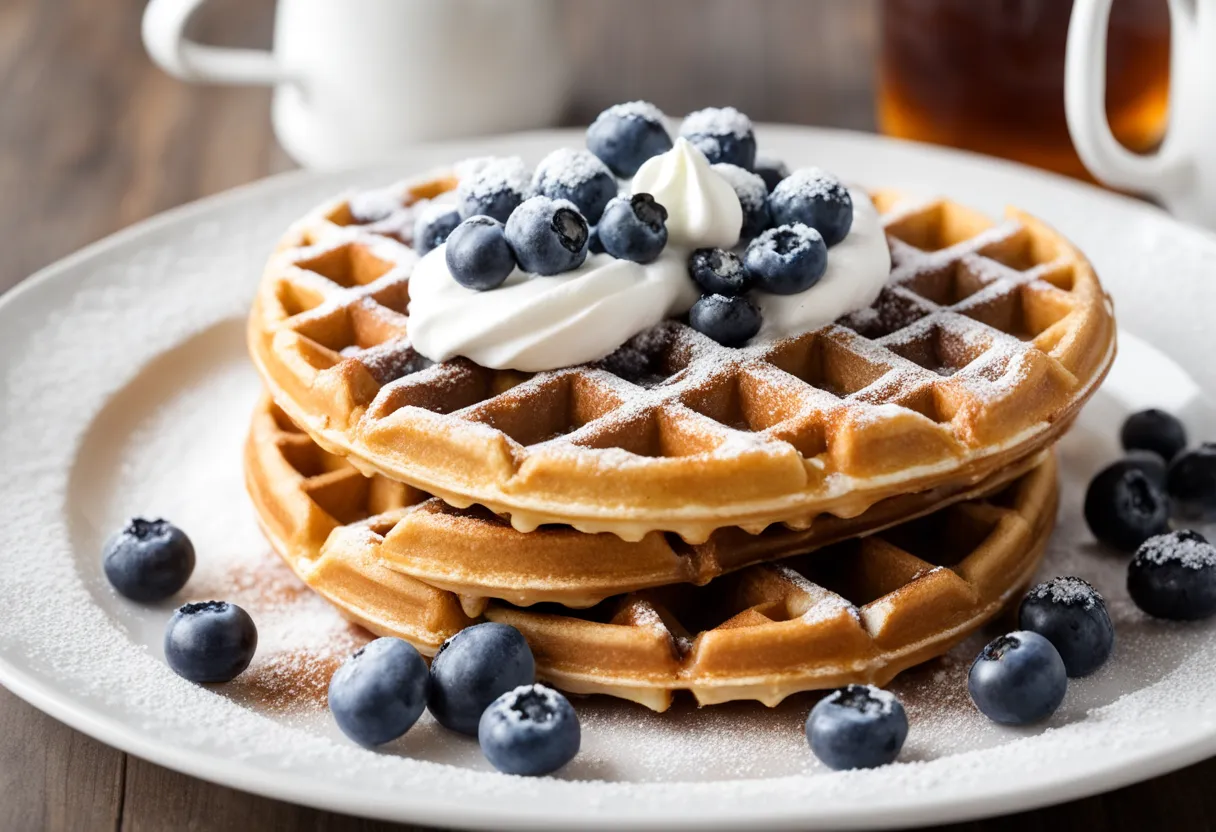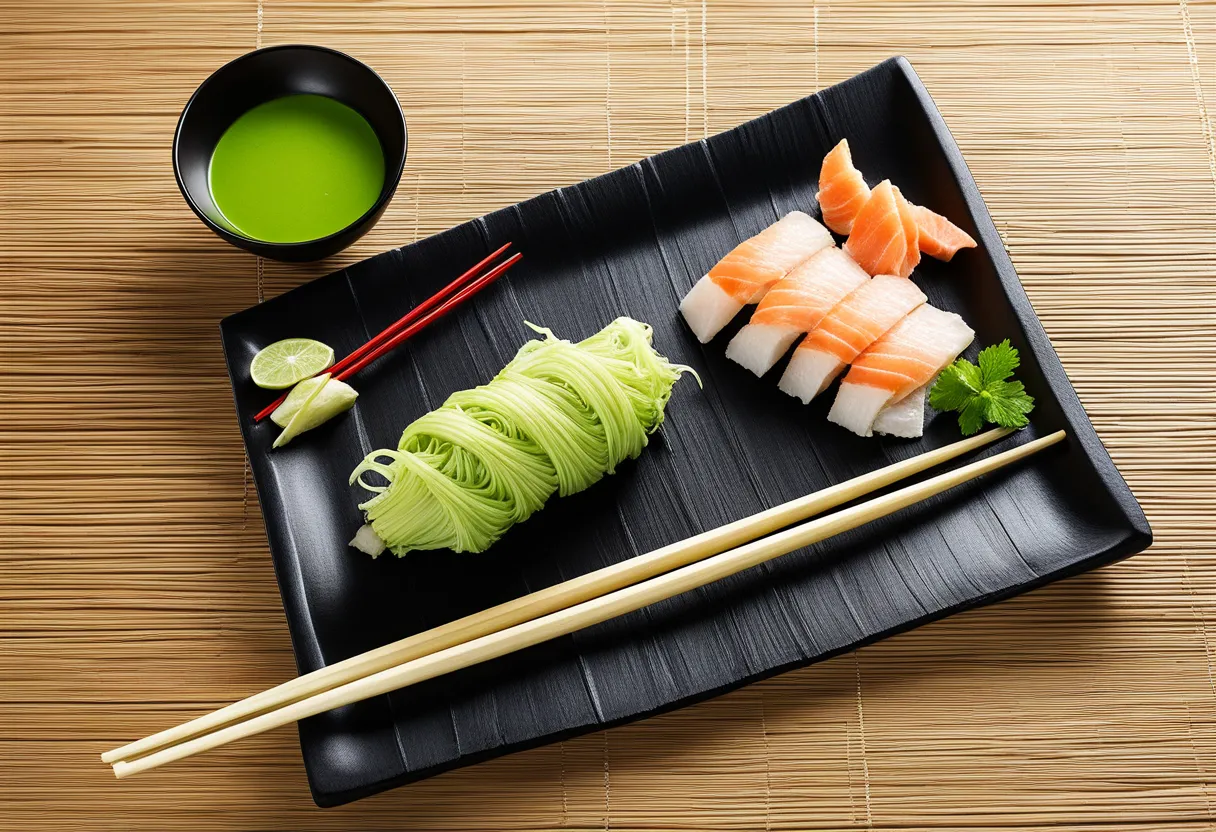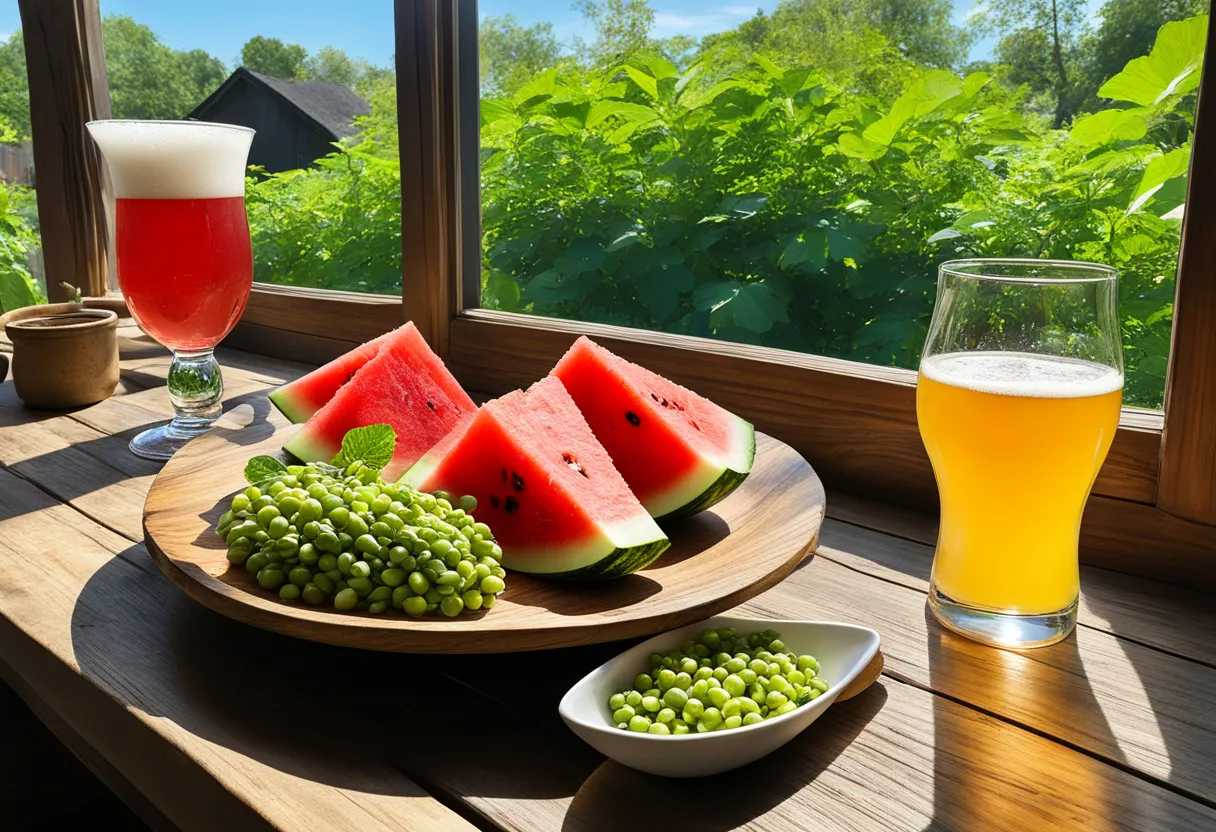Discover a world of delicious foods that start with the letter W. From well-known fruits to exotic dishes, explore the variety and flavors they bring to the table. Imagine biting into a juicy watermelon on a sweltering summer day, or waking up to the heavenly smell of waffles on a Sunday morning. These foods not only tantalize your taste buds but also offer a plethora of health benefits that can’t be overlooked. Let’s dive into this culinary journey and uncover the surprises and explosions of flavors these foods have to offer.
Watermelon, a juicy summer favorite, is not only refreshing but also packed with vitamins and hydration properties, perfect for hot days. Did you know that watermelon is 92% water? This makes it incredibly effective at keeping you hydrated during those scorching summer months. Plus, it’s a low-calorie treat that can satisfy your sweet tooth without the guilt!
Who can resist the allure of waffles with their delightful crispy edges and soft centers? They serve as a versatile base for both sweet and savory toppings, making them a beloved breakfast item worldwide. Whether topped with syrup and fruit or chicken and gravy, waffles can adapt to any flavor profile, making them a true culinary chameleon.
Walnuts are a superfood, offering heart-healthy fats, protein, and fiber. They’re a great snack or salad topping for an extra crunch. Incorporating walnuts into your diet can improve heart health and provide essential nutrients that support brain function. Plus, their rich, earthy flavor adds depth to dishes, from baked goods to salads.
Wasabi, known for its sharp, pungent flavor, is a traditional Japanese condiment that pairs exceptionally well with sushi and sashimi. This green paste can pack a powerful punch, offering a unique heat that surprises and delights the palate. Wasabi is not just about the spice; it also has antibacterial properties, making it a beneficial addition to your meal.
Wheat is a staple grain that forms the basis of countless cuisines around the world, from bread and pasta to cakes and pastries. Its versatility and nutritional value have made it a cornerstone of diets for thousands of years. Whether it’s the heartiness of whole wheat bread or the lightness of a pastry, wheat plays an essential role in our culinary experiences.
Watermelon
isn’t just a fruit; it’s a summer icon! Imagine the surprise and explosion of flavor with each bite of this juicy delight. It’s like nature’s own candy, offering a refreshing taste that’s hard to beat under the scorching sun. But watermelon is more than just a treat to cool you down; it’s packed with health benefits that many aren’t aware of.
First off, is incredibly hydrating. Comprising over 90% water, it’s perfect for those hot summer days when you need to stay hydrated. Plus, it’s rich in vitamins A, B6, and C, and contains antioxidants like lycopene, which contributes to heart health and protection from certain types of cancer.
But how can you enjoy watermelon? Let’s count the ways:
- As is: Simply cut, serve, and enjoy. Sometimes, the simplest ways are the best.
- In a salad: Combine with feta cheese and mint for a refreshing summer salad.
- Smoothies: Blend with ice and a hint of mint for a cool drink.
- Grilled: Yes, grilled! It might sound surprising, but grilling watermelon brings out a unique flavor profile.
When selecting the perfect watermelon, look for one that is firm, heavy for its size, and has a yellow spot from where it sat on the ground and ripened in the sun. This is your clue to a ripe, sweet, and juicy watermelon.
In conclusion, watermelons are a versatile fruit that not only quenches your thirst but also brings a host of nutritional benefits. So next time you’re at the market, don’t forget to pick up a watermelon and explore the variety of ways you can enjoy this wonderful fruit. Let the taste explosion begin!

Waffles
are more than just a breakfast dish; they are a canvas for culinary creativity. With their delightful crispy edges and soft, fluffy centers, waffles have captivated the hearts of food lovers across the globe. Whether you’re a fan of the classic Belgian style, prefer them thinner like the American version, or enjoy experimenting with various batter recipes, there’s no denying the versatility of waffles.
One of the joys of waffles is their ability to pair with an endless array of toppings. Here are just a few ideas to get your taste buds dancing:
- Sweet Toppings: Maple syrup, honey, fresh fruits like strawberries and bananas, chocolate chips, whipped cream, and even a scoop of ice cream for those looking to indulge.
- Savory Toppings: Fried chicken, bacon, scrambled eggs, smoked salmon, and avocado, or a drizzle of hollandaise sauce for a brunch-worthy feast.
But the explosion of flavor doesn’t stop with toppings. The batter itself can be a playground of surprise. From adding cinnamon or vanilla extract for a sweet aroma to incorporating cheese or herbs for a savory twist, the possibilities are as limitless as your imagination. Moreover, for those with dietary restrictions, waffles can easily be adapted to be gluten-free or vegan, ensuring everyone can enjoy this delightful dish.
Let’s not forget about the social aspect of waffle making. Gathering around a waffle iron, waiting for that perfect golden-brown creation to emerge, is a bonding experience. Whether it’s a family breakfast, a friendly brunch, or even a waffle party, the act of making and eating waffles brings people together in a way few other foods can.
In conclusion, waffles are a testament to the joy of eating. They remind us that food can be simple yet infinitely complex, humble yet extravagant. So, the next time you’re pondering what to make for breakfast, remember the waffle: a dish that promises a world of flavors and textures, ready to be explored and enjoyed.
Walnuts
, a powerhouse of nutrition, often don’t get the spotlight they deserve. Bursting with heart-healthy fats, protein, and fiber, these nuts are more than just a crunchy treat. They’re a versatile addition to any diet, offering a range of health benefits that can surprise you as much as their rich, earthy flavor does.
Did you know that walnuts are one of the few plant-based sources of omega-3 fatty acids? These essential nutrients are crucial for brain health and reducing inflammation in the body. Plus, incorporating walnuts into your meals can be a game-changer for your heart, thanks to their ability to improve blood vessel function and lower cholesterol levels. But that’s not all – walnuts are also loaded with antioxidants, which fight off harmful free radicals, protecting your cells from damage.
Wondering how to add more walnuts to your diet? Here are a few creative ideas:
- Toss them into your morning oatmeal or yogurt for a crunchy twist.
- Blend them into smoothies for a nutty flavor and extra nutrients.
- Chop and sprinkle them over salads or soups for an added texture and flavor.
- Bake them into bread, muffins, or cookies to enrich your baked goods with their nutritional benefits.
Whether you’re looking to enhance your heart health, boost your brain function, or simply enjoy a delicious, nutritious snack, walnuts are a fantastic choice. Their combination of surprise and explosion of flavors and benefits makes them a must-have in every kitchen. So, next time you’re at the grocery store, don’t walk past the walnuts – give them the attention they deserve and let them work their magic on your meals and your health.

Wasabi
, often referred to as Japanese horseradish, brings a unique explosion of flavor to the palate unlike any other. This vibrant green paste is not just a condiment; it’s a cultural icon in Japanese cuisine. Its sharp, pungent flavor can turn any sushi or sashimi dish from good to unforgettable. But, wasabi is more than just a spicy kick—it’s also packed with health benefits.
Did you know that wasabi has natural antimicrobial properties? This makes it not only a flavorful addition to your meal but also a protective one, helping to safeguard against foodborne illnesses. Plus, it’s believed to have anti-inflammatory and anti-cancer properties. Who knew something so small could be so mighty?
But wait, there’s more to wasabi than meets the eye. The real deal, authentic wasabi, comes from the grated root of the Wasabia japonica plant, a member of the Brassicaceae family, which includes cabbage, horseradish, and mustard. Most of what we find in restaurants outside Japan, however, is a mix of horseradish, mustard, and food coloring. Authentic wasabi has a more complex flavor profile and is less about the heat and more about the depth of flavor.
- How to Enjoy Wasabi: Use it sparingly to add a zing to sushi, sashimi, or even to spice up a steak.
- Storage Tips: Fresh wasabi loses its flavor quickly, so it’s best used immediately after grating. However, wasabi paste can be stored in the fridge for a few weeks.
Next time you’re enjoying your favorite Japanese dish, take a moment to appreciate the wasabi. Whether it’s the real deal or the more common version, it’s an integral part of the experience that adds both flavor and health benefits. So, dare to add that extra dollop, but be prepared for the explosion of taste that follows!
Wheat
When we talk about versatile grains that have shaped human civilization, wheat stands tall among its peers. This staple grain, with its golden sheen, is not just a basic food item; it’s a global culinary treasure. Wheat forms the foundation of countless cuisines around the world, transforming into various forms that delight our taste buds. From the soft, comforting embrace of freshly baked bread to the satisfying chew of al dente pasta, wheat plays a pivotal role in our daily meals.
But what exactly makes wheat so indispensable? Firstly, its adaptability. Wheat can be ground into flour of varying textures and used for breads, cakes, pastries, and more. Each culture has its unique take on wheat-based dishes, from the flaky layers of a French croissant to the dense, flavorful loaves of whole grain bread found in health-conscious kitchens.
Moreover, wheat’s nutritional profile is nothing to scoff at. It’s a significant source of carbohydrates, providing the energy we need to power through our day. Additionally, whole wheat is rich in fiber, vitamins, and minerals, contributing to a balanced diet and supporting digestive health.
Let’s not forget the joy of cooking and baking with wheat. There’s something incredibly satisfying about kneading dough or watching bread rise, a process that feels almost magical. Wheat brings people together, whether it’s families baking cookies during the holidays or friends gathering around a pasta-laden table.
To further appreciate the diversity of wheat, here’s a quick glance at its various forms:
- Whole Wheat: The healthiest form, retaining all parts of the grain.
- White Flour: Refined and bleached, it’s lighter but less nutritious.
- Semolina: Coarsely ground wheat used in pasta and some breads.
- Durum Wheat: The hardest wheat, ideal for pasta due to its high protein content.
In conclusion, wheat is a cornerstone of global cuisine, offering both versatility and nutrition. Its ability to transform into a myriad of dishes makes it a beloved ingredient in kitchens around the world. Whether you’re a fan of the simplicity of a wheat berry salad or the complexity of a multi-layered pastry, there’s no denying the impact of wheat on our culinary lives.





